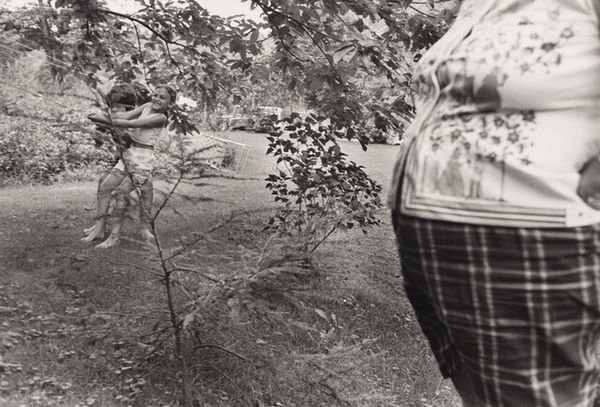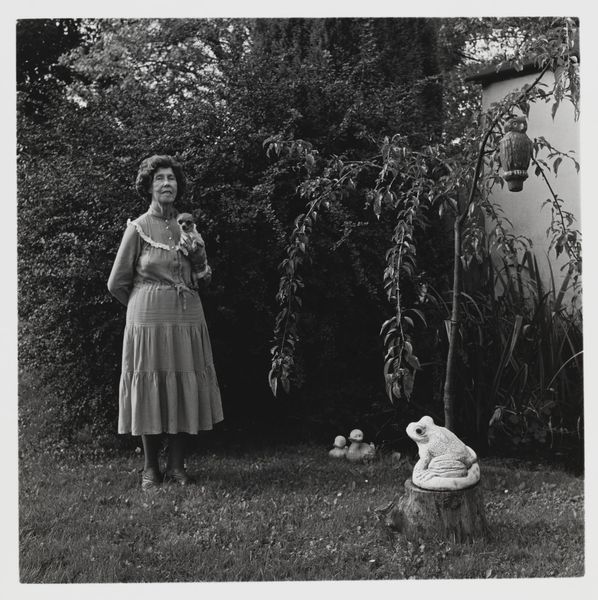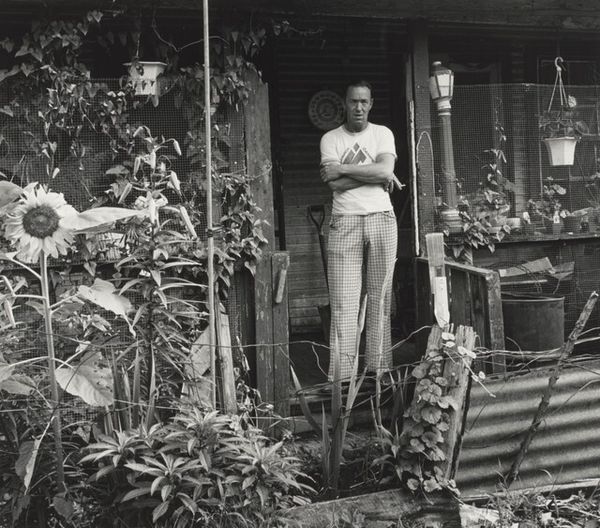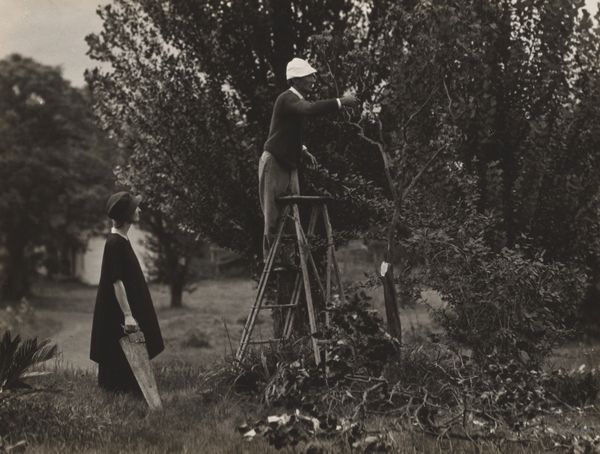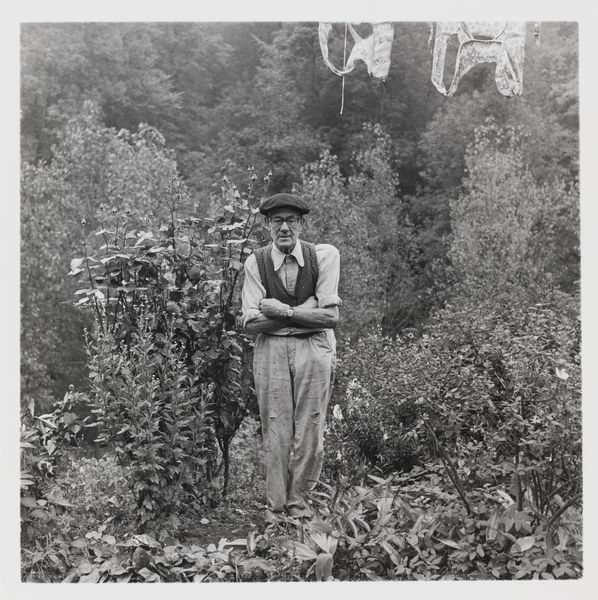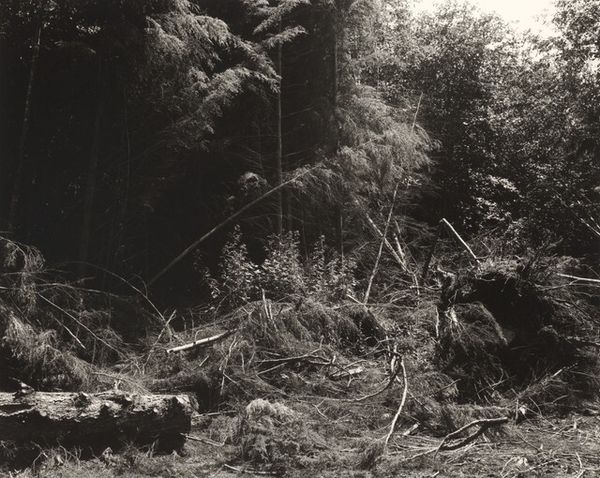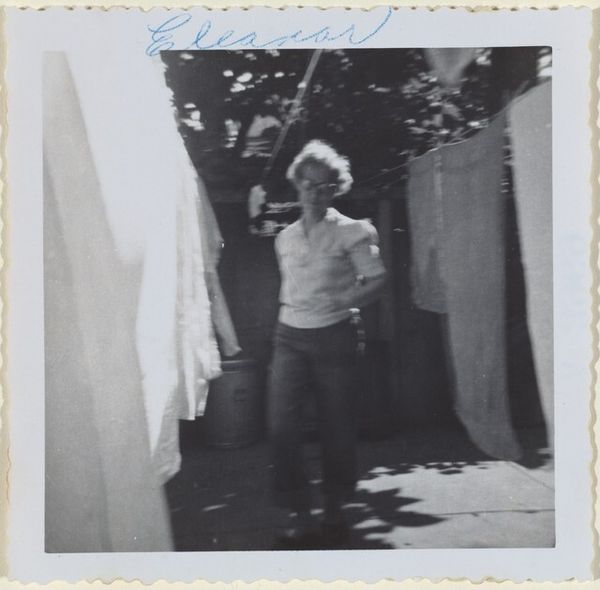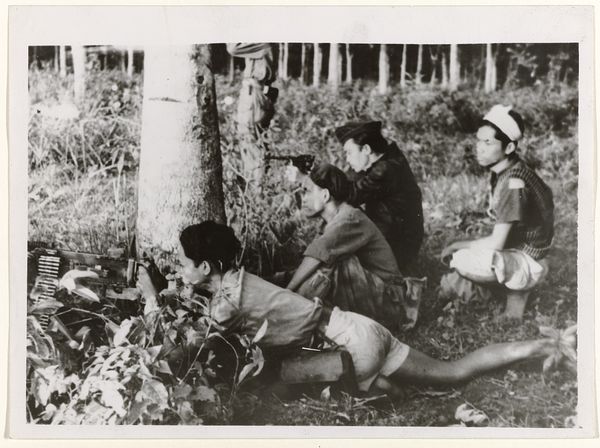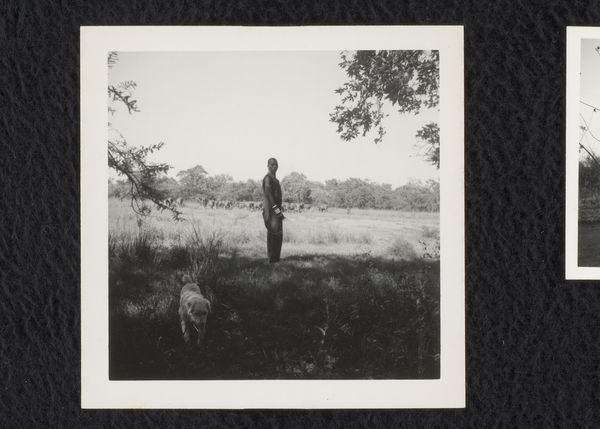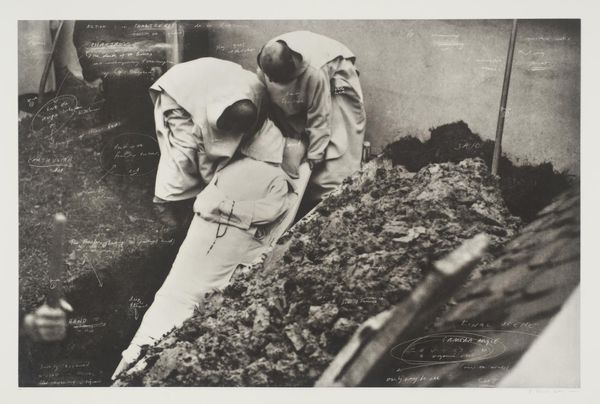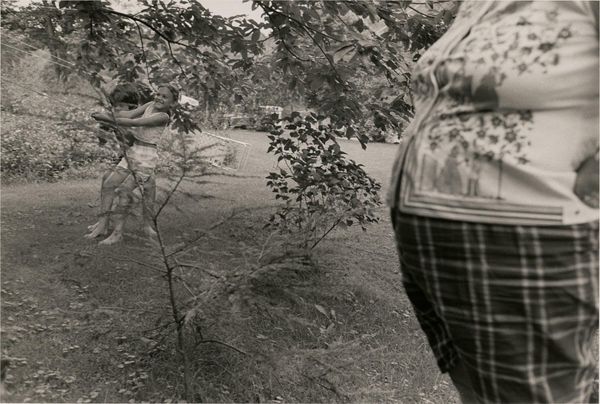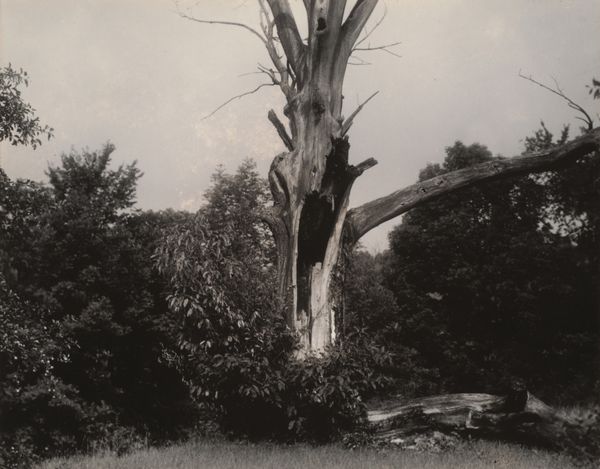
Jean Sabatine's Sixtieth Birthday, Martins Creek, Pennsylvania 1992
0:00
0:00
photography, gelatin-silver-print
#
portrait
#
black and white photography
#
photography
#
historical photography
#
black and white
#
gelatin-silver-print
#
monochrome photography
#
realism
#
monochrome
Dimensions: image: 37 × 36.8 cm (14 9/16 × 14 1/2 in.) sheet: 50.6 × 40.3 cm (19 15/16 × 15 7/8 in.)
Copyright: National Gallery of Art: CC0 1.0
Editor: So this photograph is titled "Jean Sabatine's Sixtieth Birthday, Martins Creek, Pennsylvania" by Larry Fink, from 1992. It's a gelatin-silver print. It's a pretty striking portrait—almost feels documentary-like in its realism. What are your thoughts on the way Fink approached this subject? Curator: Fink's "Jean Sabatine's Sixtieth Birthday" provides fertile ground for a materialist reading. Think about the production of this image itself. The gelatin-silver print, a mass-reproducible medium, elevates the everyday—a birthday party, perhaps a working-class gathering—to the level of art. How does this clash with, or perhaps reinforce, notions of high and low culture? Editor: I see what you mean. It's not some staged, glamorous scene. These people look like they’ve been working all day, and the photograph seems to capture that realness. Curator: Exactly. The very grain of the gelatin-silver, the stark contrast, speaks to the raw materials of photographic production. And consider the social context— Martins Creek, Pennsylvania, in 1992. What industries might have defined that region at that time, and how might those realities have shaped this celebration? Think about labor and class dynamics at play here. Editor: Good point, looking at it this way makes it more interesting. There's almost a story about industry etched on their faces. The simple act of taking a photograph becomes this statement about social and economic realities. Curator: Precisely! Fink isn't just recording an event. He is implicating the means of representation within a broader framework of materiality and consumption. It moves us away from a purely aesthetic appreciation. Editor: I never thought about it in terms of challenging those art boundaries. This photograph really speaks to the potential of analyzing art through the lens of process and its societal impacts. Curator: Agreed. It's a reminder that art doesn't exist in a vacuum, but is deeply intertwined with the materials, labor, and social conditions that produce it.
Comments
No comments
Be the first to comment and join the conversation on the ultimate creative platform.

